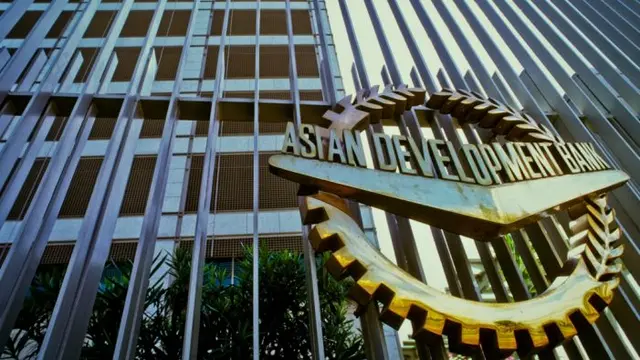Developing Asia is expected to maintain strong but moderating growth, as the expansion of domestic demand offset the side effects of U.S.-China trade tensions, said the newly released Asian Development Outlook 2019 Supplement by Asian Development Bank (ADB) on Thursday.
In the supplement to its report published in April, which is ADB's flagship annual economic publication, the Manila-based bank maintains unchanged growth forecasts for developing Asia at 5.7 percent this year and 5.6 percent the next year.
"Even as the trade conflict continues, the region is set to maintain strong but moderating growth," said ADB Chief Economist Yasuyuki Sawada.
The ongoing trade conflict is now having "discernible effects on regional investment and trade patterns," the report says.
East Asian growth forecast revised down, but China's stands steady
The bank said growth for the subregion's largest economy, China, is also unchanged, with forecasts of 6.3 percent in 2019 and 6.1 percent in 2020, as policy support counteracts softening growth in domestic and external demand.
The growth outlook for East Asia in 2019 has been revised down to 5.6 percent because of slower than expected activity in South Korea.
The subregion's growth outlook of 5.5 percent for 2020 is unchanged from April.
South Asian outlook remains robust
According to the report, the economic outlook in south Asia is robust, with growth projected at 6.6 percent in 2019 and 6.7 percent in 2020, albeit lower than forecast in April. The growth outlook for India has been cut to 7.0 percent in 2019 and 7.2 percent in 2020 because the fiscal 2018 outturn fell short.
The outlook for Southeast Asia has been downgraded slightly to 4.8 percent in 2019 and 4.9 percent in 2020 due to the trade impasse and a slowdown in the electronics cycle.
Central Asian growth outlook revised up
In Central Asia, the growth outlook for 2019 has been revised up to 4.3 percent on account of an improved outlook for Kazakhstan. Central Asia's growth outlook of 4.2 percent for 2020 is unchanged from April.
The growth outlook in the Pacific, 3.5 percent in 2019 and 3.2 percent in 2020, is unchanged, as the subregion continues to rebound from the effects of Cyclone Gita and an earthquake in Papua New Guinea, the subregion's largest economy.
Citing higher oil prices and various domestic factors, the ADB's inflation projections were revised up from 2.5 percent to 2.6 percent for both 2019 and 2020.
Established in 1966, the ADB has 68 members, including 49 from within the Asia-Pacific region.
(ASIA PACIFIC DAILY)
 简体中文
简体中文

